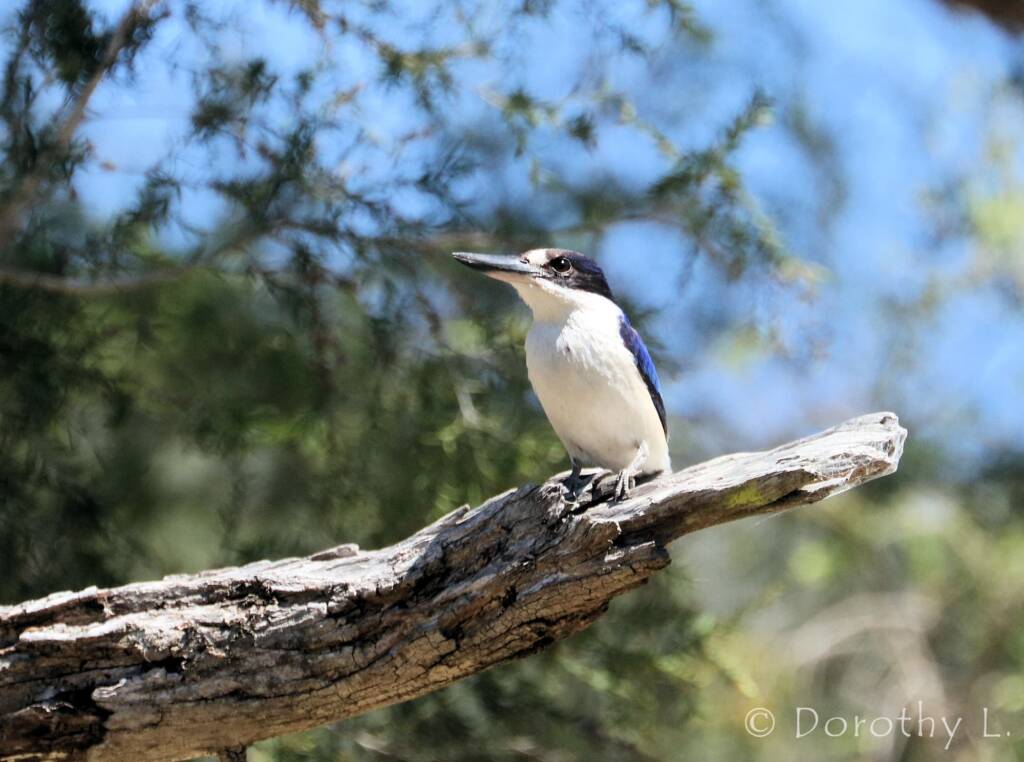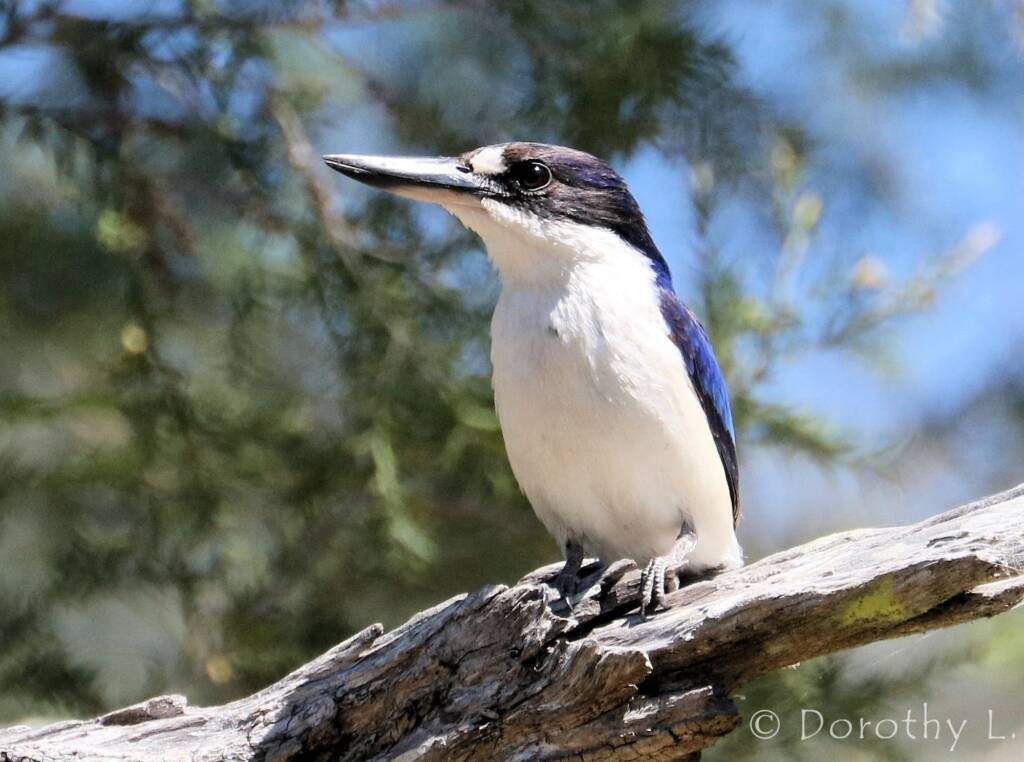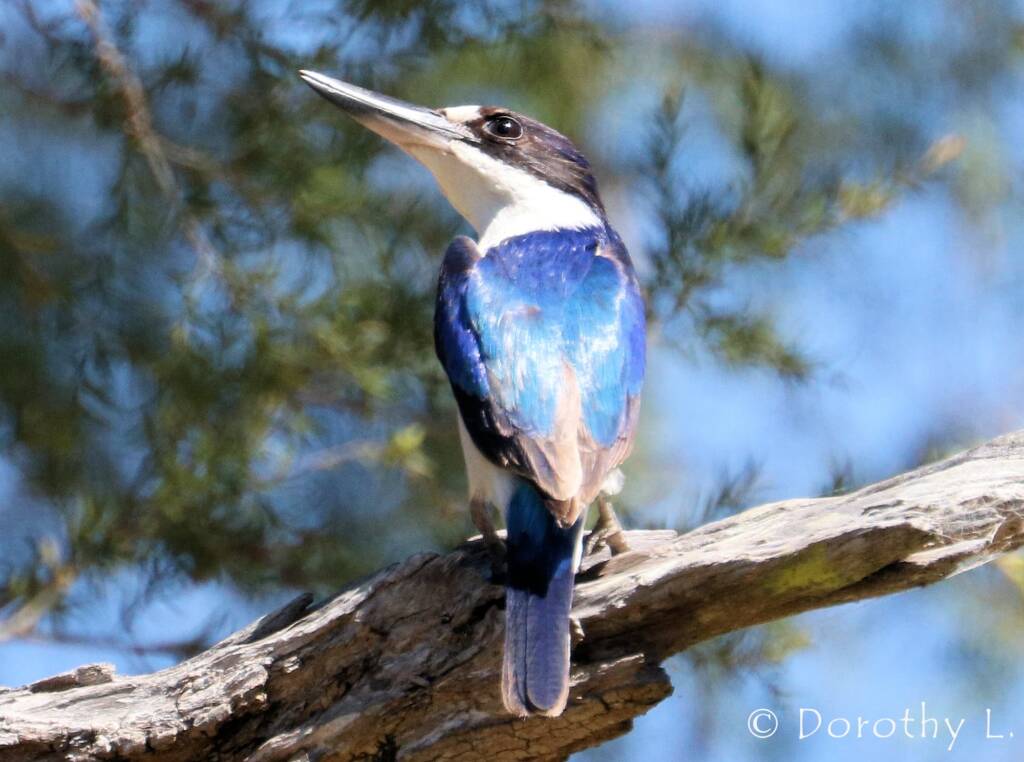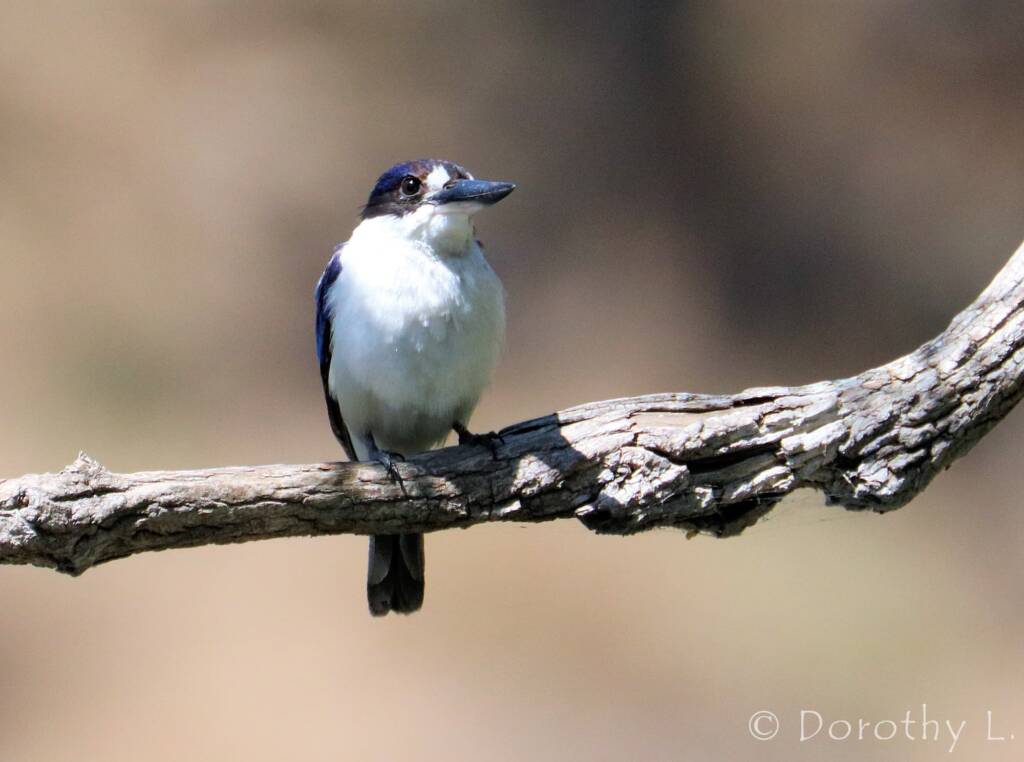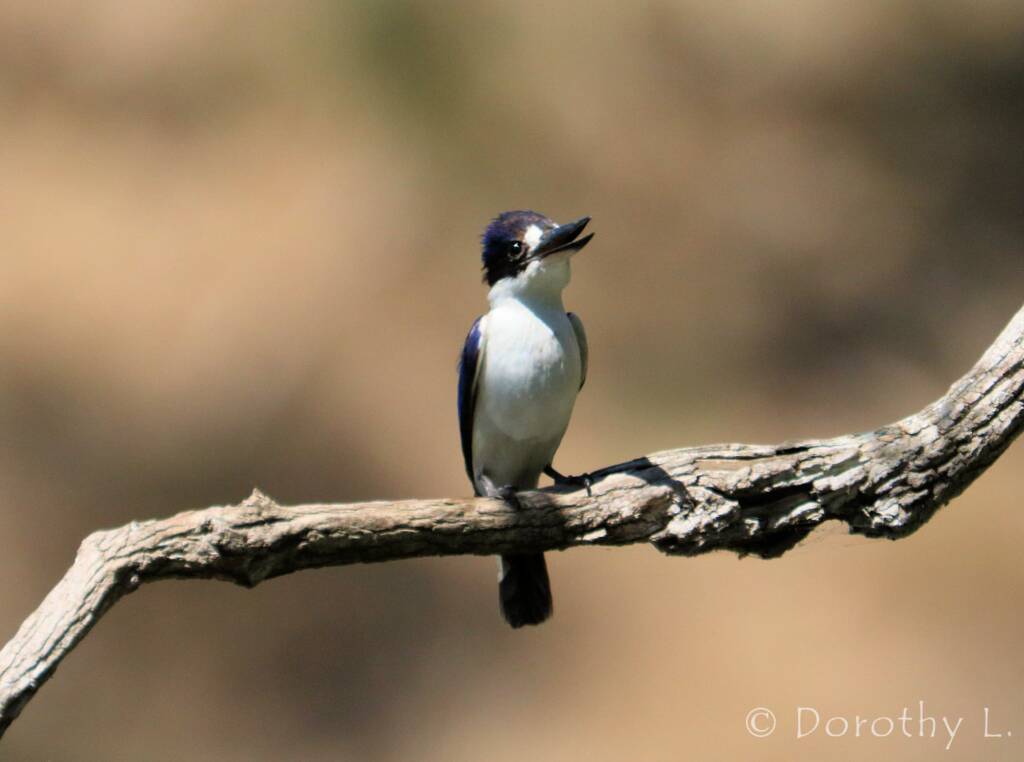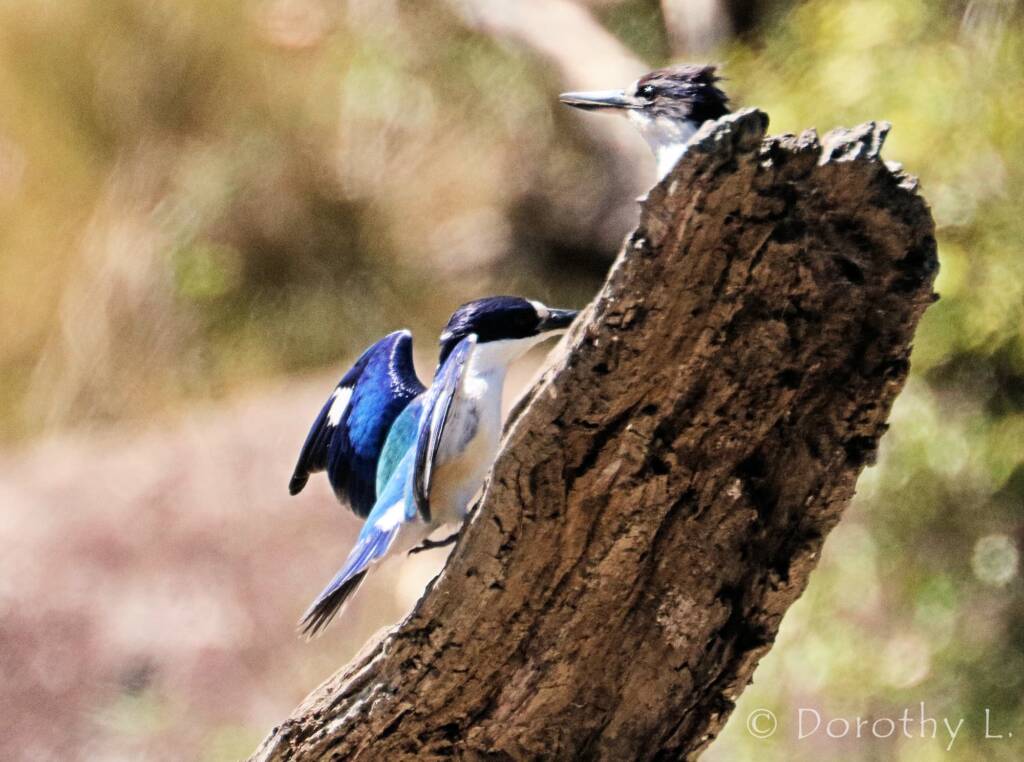KingfishersAzure Kingfisher Blue-winged Kookaburra Forest Kingfisher Laughing Kookaburra Red-backed Kingfisher Sacred Kingfisher Torresian Kingfisher
The Forest Kingfisher (Todiramphus macleayii) is a beautiful blue and white bird species, with a royal blue head, pale turquoise back and a large white spot above the a straight black bill, whilst the lower mandible has a pale strip along the bottom. There is a white patch in front of the eyes and a broad black eye-strip extending from the bill, through the eyes to the ear coverts. The tail is royal blue above, whilst below it is black to dusky grey. The underparts of the kingfisher is white and the male has a white collar which the female kingfisher does not have. In flight there is a prominent white wing patch. The eyes are dark brown, the legs and feet are dark brown to a dark grey.
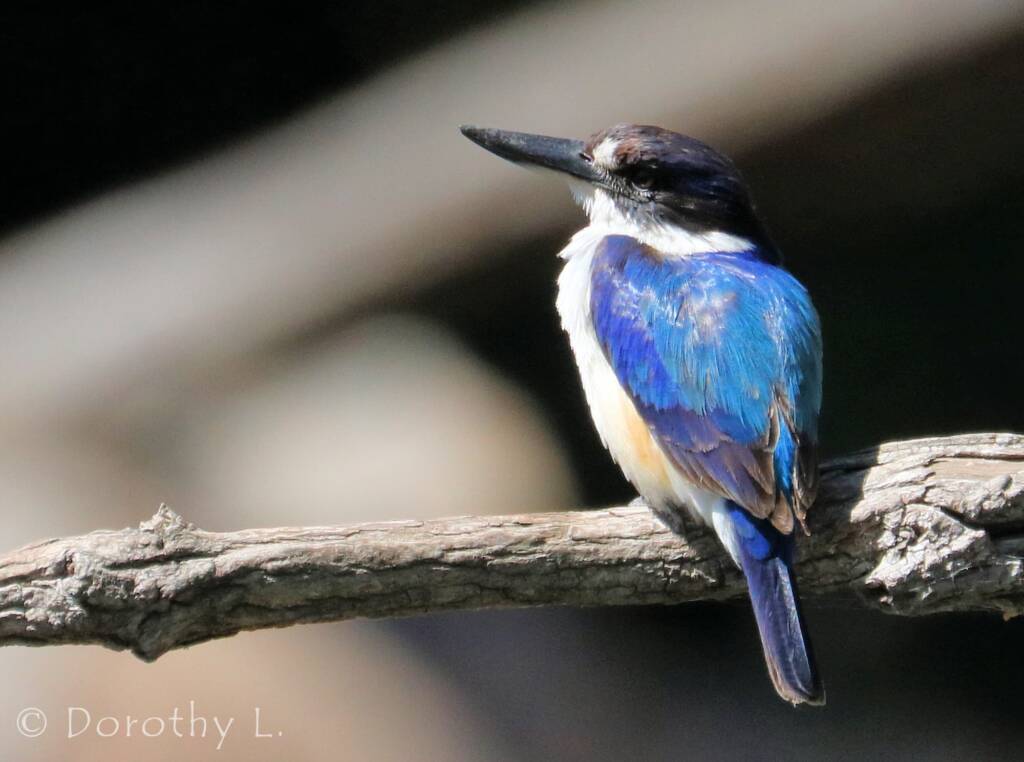
Immature birds are duller with blackish crown. In young males the neck collar is mottled blue and indistinct.
The Forest Kingfisher is native to Indonesia, Solomon Islands, Papua New Guinea and Australia. In Australia, they are found on or near the coastline stretching from Port Stephens in New South Wales, up to Cape York and west across the Top End. They are found in subtropical and tropical dry forest, through to moist lowland forest and mangrove and Melaleuca swampland.
They forage for invertebrates, small frogs, and lizards. Their diet includes insect larvae, beetles, spiders, grasshopper and worms. The Forest Kingfisher often hunts from low bare branches and telegraph wires, where they sally-pounce, seize their prey in their bill, returning quickly to their perch, where they kill the prey by banging it against the branch.
In bird terms, when we describe a manoeuvre called a “sally” — it describes how a bird will watch for prey from a suitable perch, then will fly swiftly from its perch to catch the prey in its bill, to return to a perch.
Forest Kingfisher are known to have long-term monogamous bonds. They both build the nest, sometimes in tree cavities, earthbanks, and even in the roots of fallen trees. They often will nest in arboreal termitaria (these are termite nests in trees). In these termite nests, the Forest Kingfisher excavate a short tunnel by flying straight at it from several metres away, striking it with their bill to chip away at the cement like nest with each impact. Eventually they will have chipped out a nest chamber.
Both the male and female, as well as helpers from previous seasons, help in the incubation of the eggs, as well as feeding the young.
Common names
Forest Kingfisher, Macleay’s Kingfisher, Blue Kingfisher, Bush Kingfisher.
- Scientific classification
- Domain: Eukaryota
- Kingdom: Animalia
- Phylum: Chordata
- Class: Aves
- Order: Coraciiformes
- Family: Alcedinidae
- Subfamily: Halcyoninae
- Genus: Todiramphus
- Species: T. macleayii
- Binomial name: Todiramphus macleayii
- Synonyms: Halcyon macleayii
- Subspecies:
- T. m. elisabeth
- T. m. macleayii
- T. m. incinctus


Footnote & References
- Forest Kingfisher, BirdLife Australia, https://www.birdlife.org.au/bird-profile/forest-kingfisher
- Forest kingfisher, https://en.wikipedia.org/wiki/Forest_kingfisher (last visited Aug. 27, 2021).
KingfishersAzure Kingfisher Blue-winged Kookaburra Forest Kingfisher Laughing Kookaburra Red-backed Kingfisher Sacred Kingfisher Torresian Kingfisher


